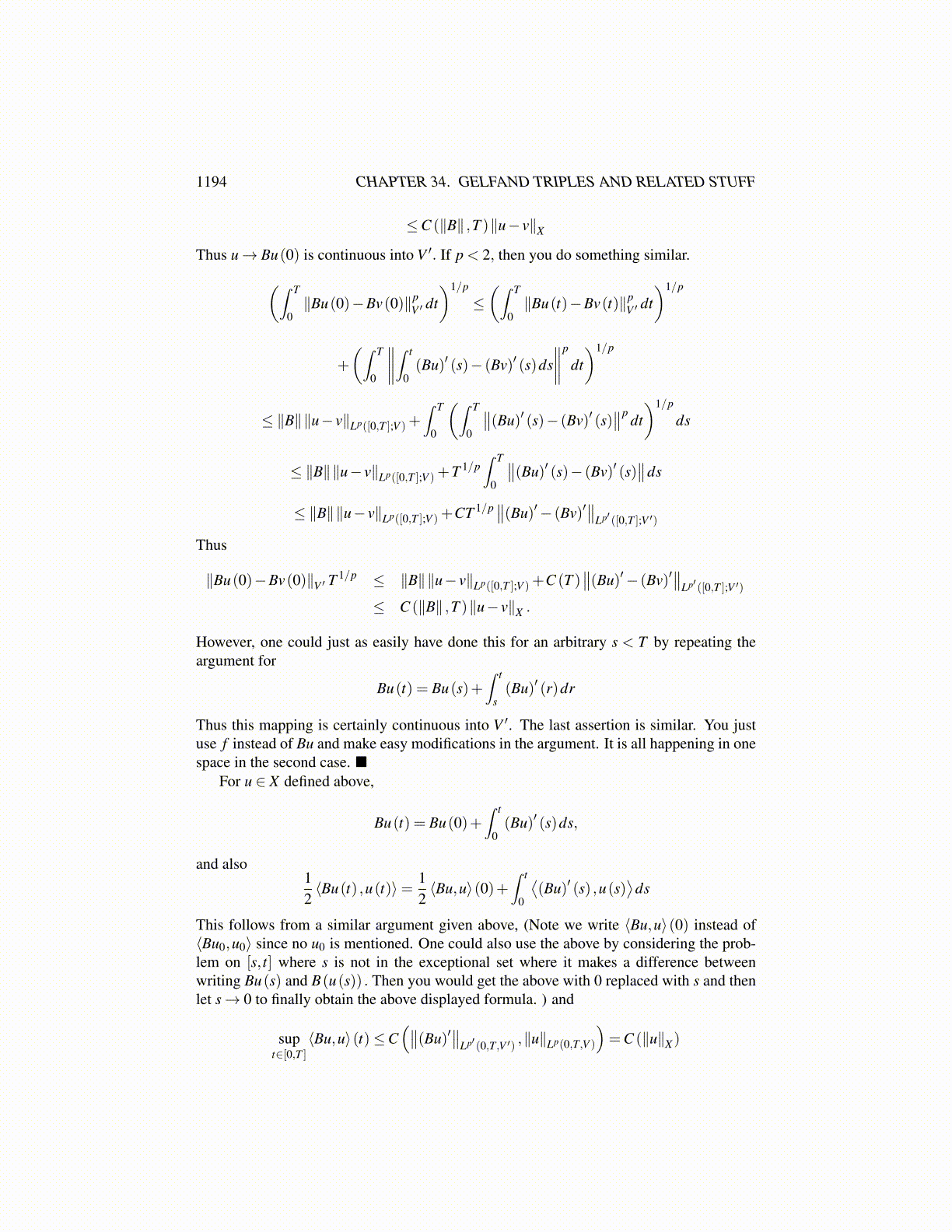
1194 CHAPTER 34. GELFAND TRIPLES AND RELATED STUFF
≤C (∥B∥ ,T )∥u− v∥X
Thus u→ Bu(0) is continuous into V ′. If p < 2, then you do something similar.(∫ T
0∥Bu(0)−Bv(0)∥p
V ′ dt)1/p
≤(∫ T
0∥Bu(t)−Bv(t)∥p
V ′ dt)1/p
+
(∫ T
0
∥∥∥∥∫ t
0(Bu)′ (s)− (Bv)′ (s)ds
∥∥∥∥p
dt)1/p
≤ ∥B∥∥u− v∥Lp([0,T ];V )+∫ T
0
(∫ T
0
∥∥(Bu)′ (s)− (Bv)′ (s)∥∥p dt
)1/p
ds
≤ ∥B∥∥u− v∥Lp([0,T ];V )+T 1/p∫ T
0
∥∥(Bu)′ (s)− (Bv)′ (s)∥∥ds
≤ ∥B∥∥u− v∥Lp([0,T ];V )+CT 1/p∥∥(Bu)′− (Bv)′∥∥
Lp′ ([0,T ];V ′)
Thus
∥Bu(0)−Bv(0)∥V ′ T1/p ≤ ∥B∥∥u− v∥Lp([0,T ];V )+C (T )
∥∥(Bu)′− (Bv)′∥∥
Lp′ ([0,T ];V ′)
≤ C (∥B∥ ,T )∥u− v∥X .
However, one could just as easily have done this for an arbitrary s < T by repeating theargument for
Bu(t) = Bu(s)+∫ t
s(Bu)′ (r)dr
Thus this mapping is certainly continuous into V ′. The last assertion is similar. You justuse f instead of Bu and make easy modifications in the argument. It is all happening in onespace in the second case.
For u ∈ X defined above,
Bu(t) = Bu(0)+∫ t
0(Bu)′ (s)ds,
and also12⟨Bu(t) ,u(t)⟩= 1
2⟨Bu,u⟩(0)+
∫ t
0
⟨(Bu)′ (s) ,u(s)
⟩ds
This follows from a similar argument given above, (Note we write ⟨Bu,u⟩(0) instead of⟨Bu0,u0⟩ since no u0 is mentioned. One could also use the above by considering the prob-lem on [s, t] where s is not in the exceptional set where it makes a difference betweenwriting Bu(s) and B(u(s)) . Then you would get the above with 0 replaced with s and thenlet s→ 0 to finally obtain the above displayed formula. ) and
supt∈[0,T ]
⟨Bu,u⟩(t)≤C(∥∥(Bu)′
∥∥Lp′ (0,T,V ′) ,∥u∥Lp(0,T,V )
)=C (∥u∥X )